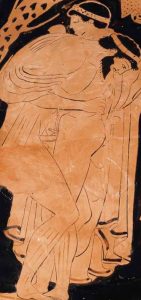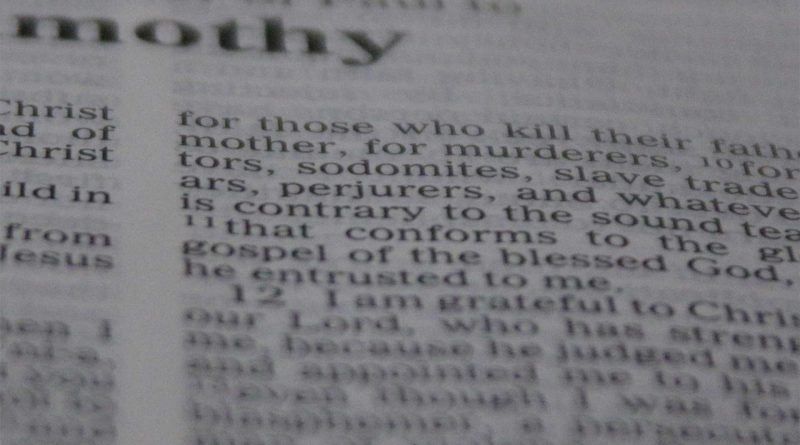1 Timothy 1:9-10
This means understanding that the law is laid down not for the innocent but for the lawless and disobedient, for the godless and sinful, for the unholy and profane, for those who kill their father or mother, for murderers, fornicators, sodomites, slave traders, liars, perjurers, and whatever else is contrary to the sound teaching.
This passage is important, because it is one of the places where the word “homosexual” was first used in a Biblical translation, in the 1946 release of the Revised Standard Version. The editors later agreed that the use of the word was a mistake, and changed the reference to “sexual perverts.” Unfortunately, the damage was done and several other modern translations borrowed the word and have kept it in their translations.
The exact translation of this passage is a real problem. The Greek terms that are used are μαλακία (malakoi) and ἀρσενοκοίτης (arsenokoitai). The first term actually means “softness” or “weakliness” – some suggest “effeminate” would be a legitimate interpretation. However, the second word is a problem, because it was a word that Paul apparently made up – the only other place it occurs is in his first letter to the Corinthians. It is a combination of two Greek words that does not occur in any other literature. The first word, αρσενικός (arsenikos) is the term for male gender. The second word κοιτίτης (koites) derives from κεῖμαι, to lie outstretched. It is the word that we get “coitus” from. It is used to indicate sexual activity. So the words combined literally mean “male sex.” However, there are a number of possibilities for what Paul intended. An “orphan word” like this is known as a hapax legomena. Scholars are very cautious about insisting on a specific translation when we have no other examples to compare the usage to.

First century Greek and Roman culture were rife with various kinds of sexuality, which forms the background to what Paul is referring to. Temple prostitution mixed sex and religion together. Pederasty was very common and accepted, where a powerful or wealthy man would use a young male servant or inferior as a sexual object. This was sometimes in the form of coitus interfemoris or “thigh sex,” but just as often was penetrative. Consent of the inferior was irrelevant. In this time, it was considered quite acceptable in Greek and Roman culture for men to have sex pretty much whenever they felt like it – while wives, of course, had a strict expectations to preserve inheritance. It was so common that it was depicted on vases, serving ware, and frescoes (see photo). The well preserved artwork of Pompeii is remarkably pornographic. John Shore writes,
During the time in which the New Testament was written, the Roman conquerors of the region frequently and openly engaged in homosexual acts between themselves and boys. Such acts were also common between Roman men and their male slaves. These acts of non-consensual sex were considered normal and socially acceptable. They were, however, morally repulsive to Paul, as today they would be to everyone, gay and straight.
The universally acknowledged authoritative reference on matters of antiquity is the Oxford Classical Dictionary. Here is what the OCD (third edition revised, 2003) says in its section about homosexuality as practiced in the time of Paul:
“… the sexual penetration of male prostitutes or slaves by conventionally masculine elite men, who might purchase slaves expressly for that purpose, was not considered morally problematic.”
It is very likely this common kind of pederasty is what Paul had in mind. However, no one can say this for certain in the absence of comparative passages.
My Quest to Find the Word ‘Homosexual’ in the Bible
Taking God At His Word: the Bible and Homosexuality
The Clobber Verses: Six scriptures cited at gays, lesbians, same-sex relationships, and the LGBTQ+




